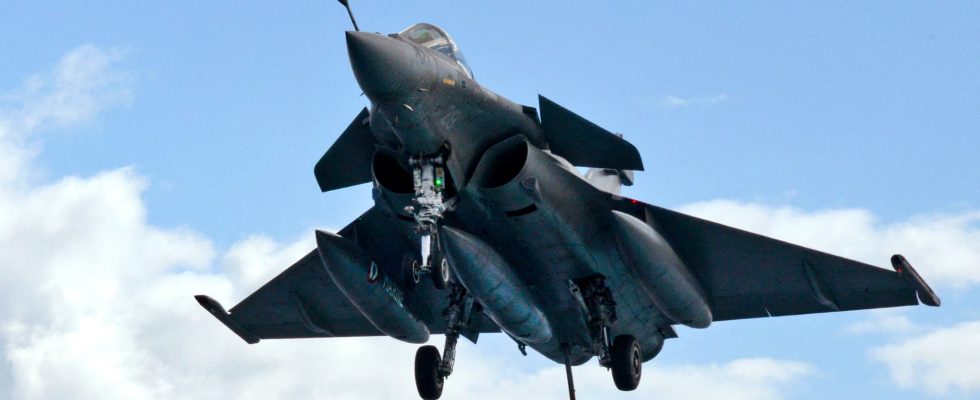The Rafale Marine, like those sold to India, is not a Rafale like the others. To transform an aviator’s plane into a version for sailors, it underwent visible modifications and others that were less so. Review of details…
With the Rafale, has India chosen the best fighter in the world to arm its aircraft carrier INS Vikrant, the latest in its fleet in “make in India” mode? It’s more than likely. Facing him, Boeing’s F/A-18 Super Hornet was no match for it.
Guest of honor for July 14, Prime Minister Narendra Modi today confirmed an order from France for 26 Rafale Marines. This is the first time that this device has been sold to a foreign country. But what is the Rafale Marine?
If the public says “the” Rafale, the singular is unsuitable for the French fighter plane. Dassault created not one, but three versions of the fighter. Two were designed for the Air and Space Force (“B” in two-seater and “C” in single-seater) and one single-seater, M for Marine, for the Naval Aviation of the French Navy.
A redesigned ejection seat
These three devices, finely detailed by Omnirole Bursta site dedicated to combat aircraft, have 80% of the same components, but the “air” and “navy” versions are far from identical.
They are obviously recognizable by the inscriptions “Air Force” and “Navy” on the fuselage and their tricolor cockade. That of the sailors is decorated with an anchor.
There are also other more discreet details. The inverted triangle affixed to the cockpit to warn of the danger linked to the ejection seat is red for airmen and gray for sailors. Moreover, the ejection is done slightly to the left so as not to hit the island of the aircraft carrier.
Other features include a car-like windshield washer to clean aircraft windshields on which salt and scum settle.
A push of 5G
But above all, technical modifications have been made to catapult from an aircraft carrier and land. To do this, they have a launch bar at the front and a landing hook at the rear to grip the stop line. The “M” has a raised plate at the front due to the more massive and higher front axle. But these devices are far from being mere accessories. These are real technical and mechanical feats.
“To be catapulted from an aircraft carrier, we created a nose gear capable of withstanding a thrust of 5G, or about 100 tons of force”, explains Dassault.
A conventional gear would not withstand this force and would be ripped off without even allowing the aircraft to take off. The Rafale M achieves this without difficulty by going from 0 to 240 km/h in 3 seconds to take to the air on the 75-meter runway of the Charles De Gaulle, 15 meters less than an American aircraft carrier. It is also thanks to this rare performance that the Rafale M is the only non-American combat aircraft authorized to operate on US Navy ships.
Withstand a “controlled crash”
Ditto for the landing gear installed between the two reactors. It is a question of stopping in a few seconds over 70 meters an aircraft arriving at 145 knots, or 268 km/h.
“We could even speak of a controlled crash, this operation is so violent, but controlled”, specifies Dassault.
This hook attaches to one of the three stopper strands. Why three? To be sure to catch at least one. This performance is based above all on the talent of the pilot, who must make a 180° turn to be in line with the ship, and on the deck officer, a naval aviation pilot who gives the instructions for a successful maneuver on a moving ship.
All these elements make the Rafale Marine a slightly heavier aircraft than the Air versions. And for good reason, in addition to the elements specific to this model, Dassault also had to reinforce the structure to absorb the power of the catapult launch and the landing to make this device a super supersonic aerial ship.

